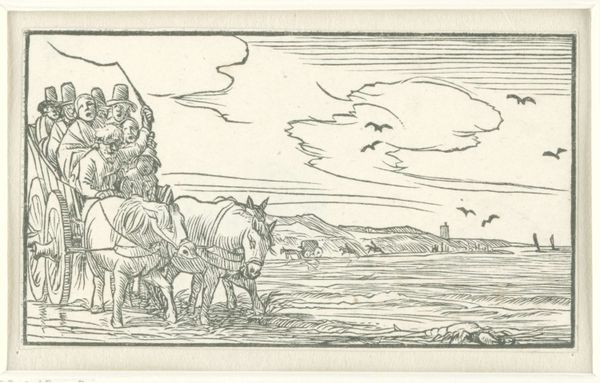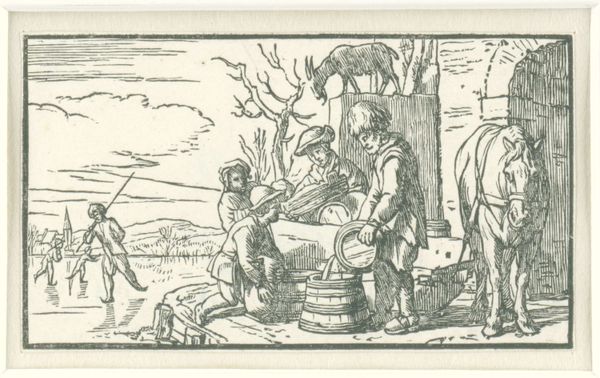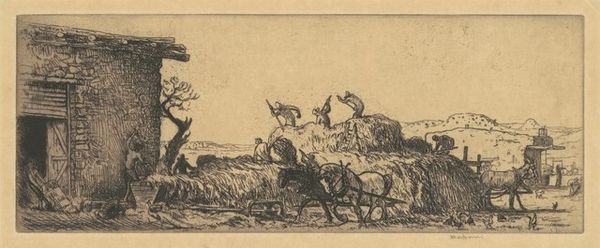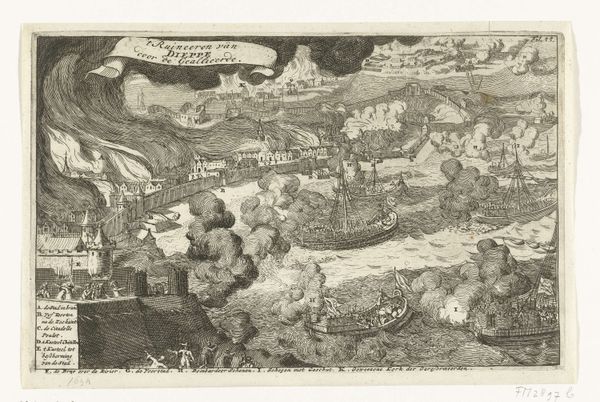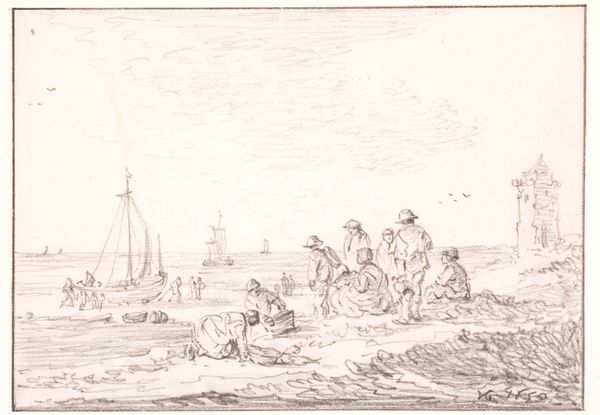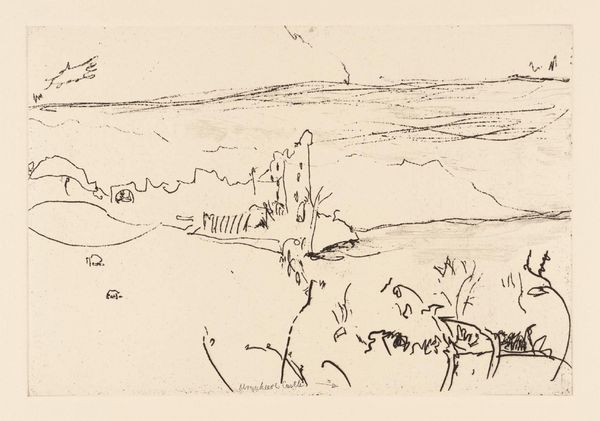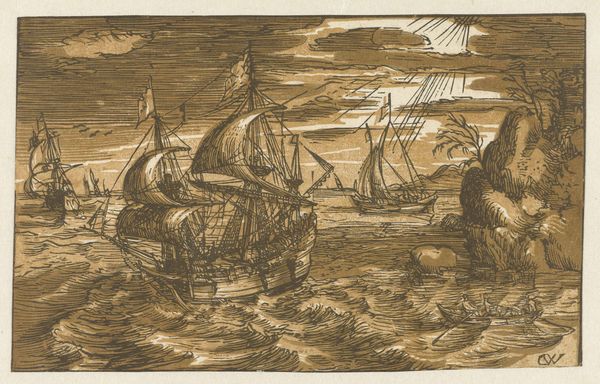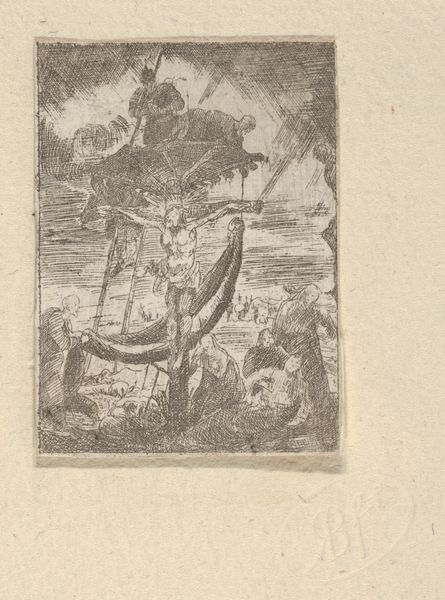
drawing, print, etching, ink
#
drawing
#
dutch-golden-age
# print
#
pen illustration
#
etching
#
landscape
#
figuration
#
ink line art
#
ink
#
pen-ink sketch
#
pen work
#
genre-painting
#
realism
Dimensions: height 64 mm, width 111 mm
Copyright: Rijks Museum: Open Domain
Curator: It's immediately evocative, isn't it? There's a starkness, but also a real sense of movement. Editor: Indeed. We are looking at a piece entitled "Maart," created by Dirck de Bray sometime between 1635 and 1694. It appears to be an etching or perhaps a print, using ink to create this tableau. Curator: The subject matter—people engaged in labor near boats—and the printmaking itself speak to a broader culture of production and consumption. It's not just a representation, it’s part of a system of reproduction and distribution of imagery. Who do you think was the target audience? Editor: That’s a good question. Genre scenes like these had a wide appeal. We need to consider the market for prints in the Dutch Golden Age, how these images circulated, and what kind of social values they promoted or reflected. Images like these played a crucial role in constructing notions of Dutch identity and daily life, especially amongst the burgeoning middle class. The presence of an enslaved woman, a detail which can be easily overlooked, indicates the colonial infrastructure needed to keep Dutch society alive at this moment. Curator: Absolutely. It also shows de Bray’s incredible technical skill. Notice the way he captures the weight of the burdens carried by the people or even the rough texture of the ram's wool. It makes you wonder about the kind of workshop where this skill was nurtured, the tools employed, and the specific knowledge that was shared amongst craftsmen to achieve this effect. The labor to create art about labor. It seems incredibly profound. Editor: It highlights the intricate link between artistic output and socioeconomic structures. De Bray worked for powerful landowners and religious institutions, and prints like this must have been made and circulated with a nod towards that base. So yes, let’s appreciate its technical achievement, but never at the expense of understanding how this little drawing served certain interests in its time. Curator: A valuable insight. It shifts the perception from mere artistic skill to something altogether more complicated, something deeply entangled with societal conditions and perhaps something less innocent than what one expects when considering landscapes. Editor: Precisely. When you view "Maart," don’t just see the landscape or labor: See the currents of power, the market forces, the complex network of artistic production that enabled it. And let it be a call to consider how we participate in similar networks today. Curator: Thank you. The image feels richer, deeper, now. The artist's labor now echoes through a completely different framework.
Comments
No comments
Be the first to comment and join the conversation on the ultimate creative platform.
